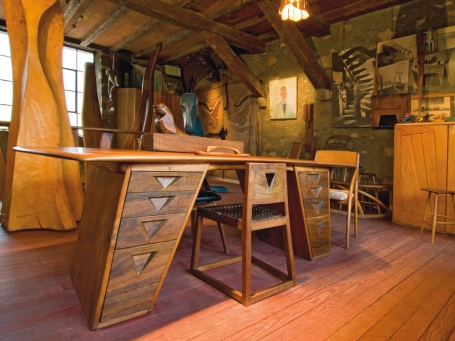
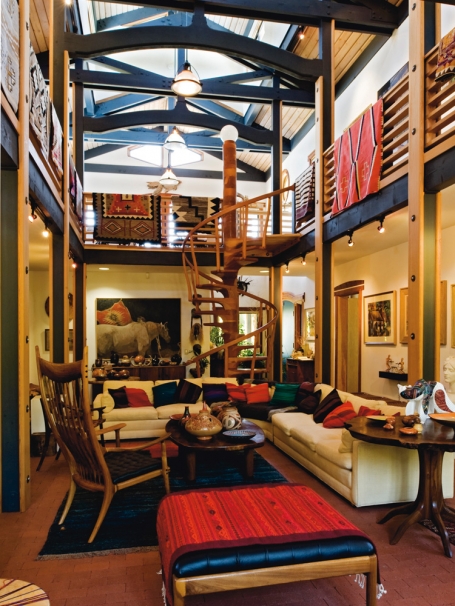
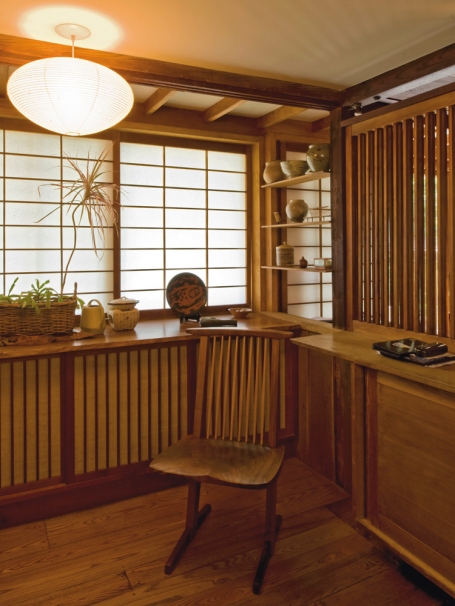
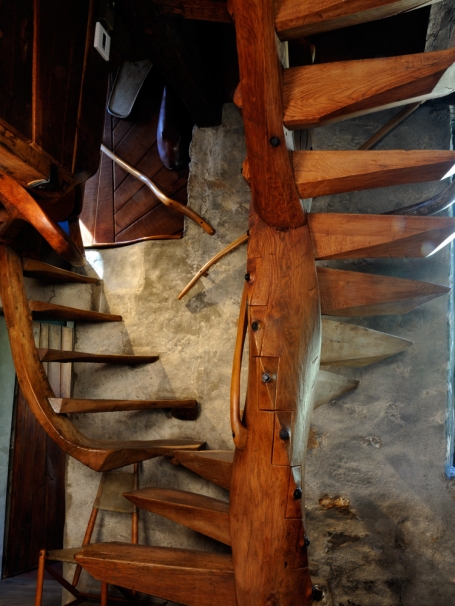
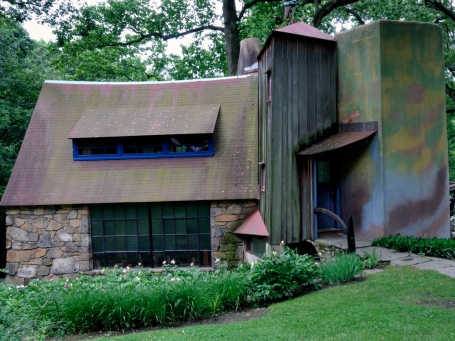
Wharton Esherick: Studio & Collection
By Mansfield Bascom, edited by Paul Eisenhauer
$19.99
Esherick, Maloof, Nakashima: Homes of the Master Wood Artisans
By Tina Skinner
Photography by Steven Paul Witsitt
$49.99
Schiffer Publishing Ltd.
Atglen, PA
schifferbooks.com
By the late 1950s and early '60s, when Wharton Esherick (1887-1970) was starting to be hailed as the "dean of American craftsmen" and the "godfather of American studio furniture," he had spent a lifetime in relative obscurity in rural Paoli, PA, evolving from an academically trained painter into a master artist-craftsman who found in wood and the physical experience of working with it the perfect means of distilling his varied artistic influences into a style uniquely his own. His master work was his studio/home on a wooded hillside, begun in 1926 and completed in 1966, in which all the architectural details, as well as the furnishings, are painstakingly integrated. The studio is now a museum, opened in 1972 by the artist's heirs, and Wharton Esherick: Studio & Collection is its catalog. The book introduces readers to such marvels as the famous red oak spiral stair, carved in 1930, twisting up through the house linking the two levels, and which, Anne d'Harnoncourt writes in her preface, "declares [Esherick's] gift for combining the sculptural with the functional." There is his singular furniture (an expressionistic desk, spiral library ladder, music stands and three-legged stools), his sculptures, masterful woodblock prints and useful objects like salad bowls. The biographical sketch by Mansfield Bascom sheds light on a career marked by a constant, tireless joy in creation, despite limited commercial success.
Views of Esherick's home are presented alongside those of the much larger home/workplaces of two other acknowledged giants of American studio furniture-Sam Maloof (1916-2009) in Alta Loma, CA, and George Nakashima (1905-1990) in New Hope, PA, in Homes of the Master Wood Artisans. The three makers shared a passionate love of wood, sought to bring out its warmth and natural qualities and lavished ingenuity on such details as door latches and pulls, yet there are clear differences. Maloof's rooms with their bright colors and California light are showcases for his iconic chairs and casework and tasteful arrangements of craft objects. The Nakashima environment stands out for its serenity, for the spectacular slabs of wood used in his tables, his now-classic take on the Windsor chair, and the Japanese architectural elements such as Shoji doors.
For those eager to absorb an important chapter in 20th-century craft history and thinking of visiting these historic residences, these books should serve as a mighty appetite-whetter or the next best thing to going.


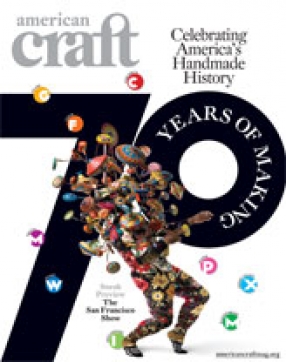



Post Your Comment
Fields in bold are required. Your email address is required but not published. Please enter the five digit code as it appears in the text field on its right.